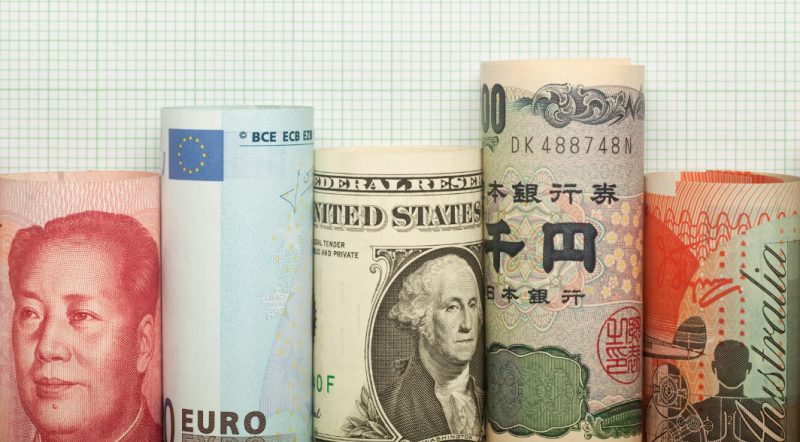Australia’s strategic symmetries
Posted By Malcolm Cook on June 28, 2019 @ 11:00

Australia’s first foreign and trade policy white paper [1] in 1997 was titled ‘In the national interest’ and its successor in 2003 was titled ‘Advancing the national interest [2]’. The 2017 white paper [3] dispensed with the catchy title (although it does have a three-word slogan on the spine and cover: ‘Opportunity Security Strength’). For the claim of a single unifying national interest (and the corresponding one of a unifying grand strategy to advance that interest) to be valid, there should be a high level of policy coherence and continuity across different administrations and different policy areas.
Australia’s foreign and trade policy choices and their implications for Australia’s alignment in the major-power rivalry between the US and China strongly support the idea of a single unifying national interest and the claims of the first two foreign policy white papers. Over the past decade, and particularly since Donald Trump became US president, this defining major-power rivalry has expanded, deepened and become more acute in the economic arena.
As I show in a new ASPI paper, Between Japan and Southeast Asia: Australia and US–China economic rivalry [4], a close look at Australian economic policy choices reflects the same alignment pattern when compared with key neighbouring states, and with Australian defence policy choices.
Longitudinally, the red centre of Australia is between Tokyo and Singapore but closer to Tokyo. The geographical location of Australia mirrors Australia’s alignment position in the US–China rivalry. Australia’s position is close to that of Japan, but Japan’s position is more aligned with that of the US than that of Australia. Southeast Asian states’ alignments are closer to China and more distant from the US than that of Australia.
The World Trade Organization has been the main institutional arena for the US–China economic rivalry. The US is responsible for more than half of the complaints filed [5] against China in the WTO. China is the number one target of US complaints in the WTO despite China’s later entry into the organisation. The US has been the target of 15 of the 22 complaints filed by China in the WTO, including five since 2018. Japan has filed two complaints against China, while Australia, along with Indonesia, the Philippines, Vietnam, Thailand, Malaysia and Singapore, have filed no complaints against China.
Japan has joined 16 of the 23 US complaints against China as a third party—more than any other WTO member. Australia has joined 11 of the 23 US complaints (the third most after Japan and South Korea) covering a wide range of economic sectors. Southeast Asian members of the WTO have been more reticent. Vietnam and Thailand have joined five of the US complaints against China, while Malaysia has joined none. Like the US and the European Union, Japan hasn’t recognised China as a market economy within the WTO and has no preferential trade agreement with China. Australia, as with the Southeast Asian states, recognises China as a market economy and has a preferential trade deal with China.
This alignment pattern is repeated when it comes to engagement with recent US and Chinese regional economic initiatives. The US and Japan are not members of the China-initiated and -led Asian Infrastructure Investment Bank. Australia and all 10 states of Southeast Asia are founding regional members. Yet, like Washington and Tokyo, Canberra has demurred from signing the memorandum of understanding in support of China’s Belt and Road Initiative that Beijing wanted. The Australian prime minister was not invited to either of the Belt and Road Forums held in China. All 10 Southeast Asian countries have expressed their support for the Belt and Road Initiative and their respective leaders have attended one or both forums.
Japan and Australia have both been more supportive of US trade initiatives than their Southeast Asian neighbours. Australia and Japan joined the Trans-Pacific Partnership trade negotiations after the US joined. Six of the 10 Southeast Asian states never joined, while Singapore and Brunei were founding negotiating partners long before the US came onboard. More recently, Australia, Japan and the US have been working together on Indo-Pacific trilateral economic initiatives.
This alignment pattern in the economic arena replicates that of the defence realm. Australia and Japan are more actively engaged with the US than any Southeast Asian state is, and more willing to criticise aggressive destabilising Chinese activities in the South China Sea and beyond than Southeast Asian states are. Yet Australia, particularly the Australian navy, has a closer relationship with China and the People’s Liberation Army Navy than the US and Japan do, while many Southeast Asian states have closer and broader defence relations with China than Australia does.
These symmetries of Australian policy choices and their alignment implications strongly suggest that there’s a bipartisan understanding of the national interest and grand strategy in Australia. Those predicting or hoping for major changes in Australia’s alignment position in the US–China rivalry will continue to be disappointed.
Article printed from The Strategist: https://www.aspistrategist.org.au
URL to article: https://www.aspistrategist.org.au/australias-strategic-symmetries/
URLs in this post:
[1] foreign and trade policy white paper: https://australianpolitics.com/1997/08/31/in-the-national-interest-foreign-policy-white-paper.html
[2] Advancing the national interest: http://unpan1.un.org/intradoc/groups/public/documents/apcity/unpan012801.pdf
[3] 2017 white paper: https://www.fpwhitepaper.gov.au/foreign-policy-white-paper
[4] Between Japan and Southeast Asia: Australia and US–China economic rivalry: https://www.aspi.org.au/report/between-japan-and-southeast-asia-australia-and-us-china-economic-rivalry
[5] complaints filed: https://www.wto.org/english/tratop_e/dispu_e/dispu_by_country_e.htm
Click here to print.